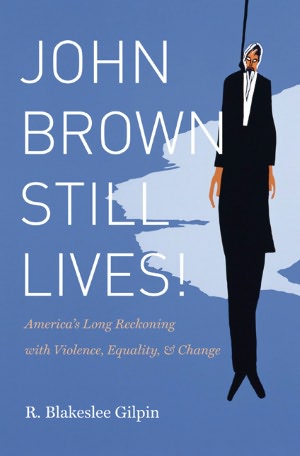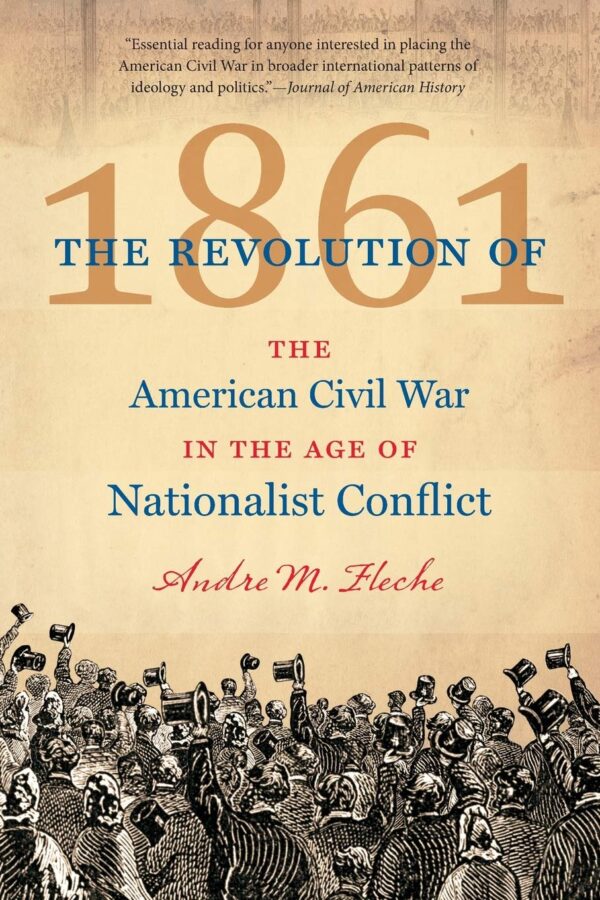John Brown Still Lives!: America’s Long Reckoning with Violence, Equality, and Change by R. Blakeslee Gilpin. University of North Carolina Press, 2011. Cloth, ISBN: 0807835013. $30.00.
 The catalysts, conduct, context, and consequences of the Civil War era continue to resonate through American intellectual and popular life. Abraham Lincoln, Robert E. Lee, and to a lesser extent, military commanders such as James Longstreet, George Henry Thomas, and William T. Sherman still stimulate debate among scholars and students. Few figures, however, generate more passion than John Brown.
The catalysts, conduct, context, and consequences of the Civil War era continue to resonate through American intellectual and popular life. Abraham Lincoln, Robert E. Lee, and to a lesser extent, military commanders such as James Longstreet, George Henry Thomas, and William T. Sherman still stimulate debate among scholars and students. Few figures, however, generate more passion than John Brown.
Brown emerges from the pages of American history on three primary stages. His explosive role in the violence and turmoil of “Bleeding Kansas”—particularly his murder of five pro-slavery settlers at Pottawatomie in 1856—first brought Brown out of the shadows of the anti-slavery movement. More important, Brown’s raid on Harpers Ferry, Virginia, in October 1859 launched the nation on the path toward civil war by enflaming sectional tensions. Finally, Brown’s trial and subsequent execution exacerbated national polarization and stimulated varying interpretations of Brown’s motivations and methods, polemics that have endured for a century-and-a-half.
R. Blakeslee Gilpin is a recent graduate of Yale University, where he produced the dissertation that became this book under the guidance of the renowned student of race relations and the Civil War, David Blight. Gilpin’s study explores how and why Brown’s legacy has been reinterpreted since his death on the gallows at Charles Town. Brilliantly conceived and deeply researched, Gilpin provides an episodic journey through the literature and art that has considered Brown’s place in illuminating the issues of violence, equality, and change in American life.
Gilpin’s examination begins with the manipulation of Brown’s image in the 1850s by journalist James Redpath. He subsequently guides us to arenas as diverse as the streets of Harlem, the campus of Vanderbilt University, and the inner circles of the fledgling NAACP to illustrate how passing generations have re-invented the John Brown that best fit their own agendas.
Redpath’s early biography painted Brown as a Christ-like figure, employing heroic myths aided by the literary support of New England lions Henry David Thoreau and Ralph Waldo Emerson. Franklin Sanborn, one of Brown’s original “Secret Six” financial backers, built on Redpath’s martyred hero by stripping Brown of his violent propensities in order to make the lamented abolitionist palatable to the American psyche. Gilpin points out that whites embraced this image of Brown more readily than blacks, who had little trouble remembering Brown as both violent and heroic.
Nowhere was this divide more evident than among the founders of the National Association for the Advancement of Colored People, an organization in which Oswald Garrison Villard and W.E.B. Du Bois advanced opposing portraits of John Brown. The patrician Villard, a dedicated pacifist and descendant of pioneering abolitionist William Lloyd Garrison, abhorred Brown’s reliance on mayhem and posited that Brown’s fame existed despite the cruel, gruesome, and reprehensible acts he committed in Kansas and Virginia. His biography of Brown found an eager audience in the early 20th century. Du Bois, the author of a competing Brown biography, clashed with Villard at every turn, ratifying Brown’s use of the knife and embracing calculated violence in the cause of equal rights for African Americans.
A generation later, Stephen Vincent Benet penned his Pulitzer Prize-winning epic poem, John Brown’s Body, celebrating the heroism of both Union and Confederate protagonists. This viewpoint marched in lockstep with the reconciliationist perspective of the interwar period in America. The Nashville Fugitives, led by Robert Penn Warren, moved from reconciliation to Confederate apologia beginning in the 1920s. Warren’s biography of Brown attacked the heroic anecdotes in previous accounts and argued that Brown was more interested in personal fame and fortune than in emancipation. As allies of the Lost Cause interpretation of the Civil War, the Fugitives shared certain perspectives with the Revisionist historians of the 1930s, who feared, however, that the blatantly partisan tone adopted by Warren, Allen Tate, Andrew Lytle and others from the Nashville fraternity would undermine their more measured conclusions that the Civil War was a needless conflict precipitated by radicals in both sections and abetted by inept politicians. Brown’s image provides the common touchstone that links Gilpin’s examinations of these disparate latitudes.
Finally, Gilpin considers the artwork of John Steuart Curry and Jacob Lawrence who painted in the 1930s and 1940s and whose depictions of Brown remain familiar seventy years later. Curry’s mural depicting the wild-eyed fanatical Brown still dominates the rotunda of the Kansas Statehouse in Topeka and may be the most widely reproduced image of Brown. Lawrence drew his inspiration from the streets of Harlem. His series of twenty-two paintings entitled The Life of John Brown sought to inspire “the ongoing pursuit of freedom, justice and equality” (158).
Gilpin brings the interpretation of Brown up to the present in a thoughtful epilogue in which he illuminates the varied references to Old Osawatomie from men such as C. Vann Woodward, Malcolm X, H. Rap Brown and Barack Obama—or in the case of Martin Luther King, the lack of such references.
Gilpin’s monograph is one of the most innovative entries in the crowded field of Civil War memory studies. “Exploring the whirlwinds Brown helped sow broadens our understanding of historical amnesia, systemic racism, and the indelible conservatism at the heart of America’s understanding of its past, present, and future,” Gilpin explains in justifying the value of his work. “The episodes in this book reveal how amnesia, hypocrisy and conservatism still define America’s perpetual negotiations with its founding principles” (2).
Gilpin substantially achieves his mission (although some might quarrel with his premise) and readers emerge with unique insights into how passing generations manipulated John Brown’s legacy to serve their own needs and rationalize contemporary values. Probing Brown’s role as a conduit between violence, equality, and change and the politics of the present, argues Gilpin, “highlights Americans’ desire to maintain long-standing hierarchies of race, class, and gender” (2). Ironically, Gilpin’s invocation of the holy trinity of modern historical study provides potent fodder for future analysts interested in defining the historiography and memory of academic scholarship in the early 21st century.
A. Wilson Greene is the Executive Director of Pamplin Historical Park and the National Museum of the Civil War Soldier in Petersburg, Virginia.
